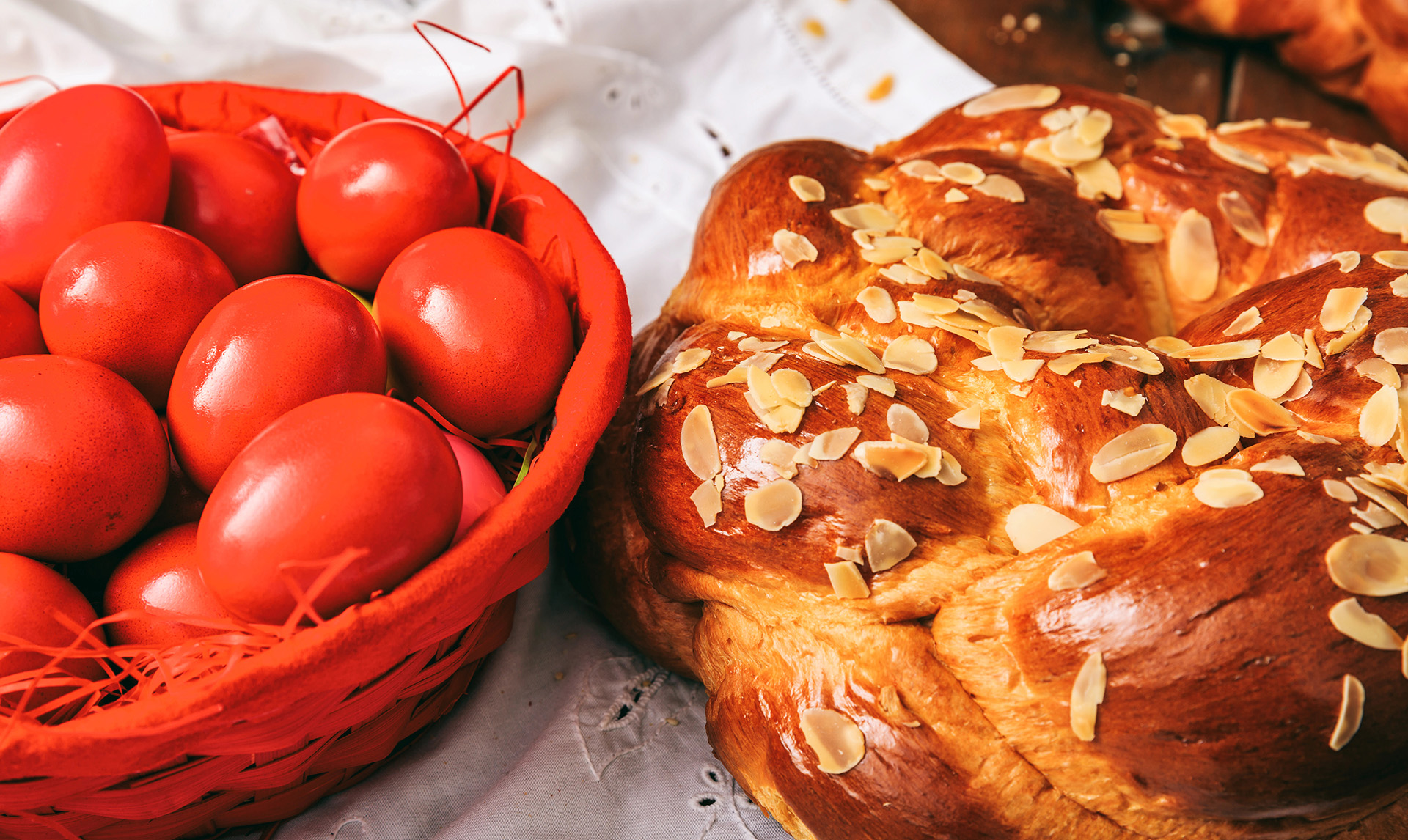When is Easter in Crete in 2022?
Suppose you plan to experience the Greek Orthodox Easter in Crete in 2022. In that case, you should arrive early enough to observe the celebrations held on Good Friday – April 22 – and all the traditions culminating on Easter Sunday (Kyriaki tou Pascha) – April 24. The next day, Easter Monday is a public holiday and an opportunity for families to get together for a copious feast after more than 40 days of fasting preceding Easter Sunday.
Easter Traditions in Crete
The Greek Orthodox Easter is a season of sorts: Lenten lasts more than 40 days if you include the Holy Week before Easter Sunday, when people are still fasting: March 7 to April 23, 2022.
And while the Holy Week extends from Palm Sunday until Holy Saturday, the preparations for the main event begin on Holy Thursday, with dyeing and decorating Easter Eggs. The traditional color is red, and purists will stick to it: it symbolizes the blood of Christ.
Start looking for tsoureki sweet bread in bakeries during this season: they are only available for Easter, although variations exist for Christmas and New Year’s (Vasilopita). But for Easter, the tsoureki has a whole crimson-red dyed egg in the middle of the braids.
The Good Friday follows with its pious traditions. Everywhere on the island, you will wake to the peal of the bells calling the faithful to attend the procession of the Epitaphios. People come to church from early morning until dusk to see the Epitaphios and kiss the bier. Then, when the sun sets, priests and their acolytes carry the bier around the church’s neighbourhood: a funerary procession with particularities in every village. But what is common to all these Epitaphios processions are the candles lighting the streets and windows everywhere and the faithful following the bier with stoic faith and hope.
On Easter Saturday morning, you can visit the marketplace to buy beautifully ornate lambathas (or lampades) – Easter Candles. You can also purchase other Easter gifts, especially for children. But if you are vacationing on Crete Island during the Holy Week, this is an occasion to get some souvenirs available only now.
Late in the evening, you will notice Cretans slowly making their way to church to attend the Pascal Vigil, which begins about an hour before midnight. The Midnight Office is long, and it ends in darkness before the priest lights a candle from the eternal flame on the altar and brings it to the people attending the liturgy.
They will then light their candles from each other and join the procession circling the church, recreating the journey of the Myrofóroi (Myrrhbearers) who discovered the empty Tomb of Christ. The procession ends in front of the church’s closed doors: when the priest opens them, the act is symbolic of the “rolling away of the stone” from the tomb.
The Divine Liturgy follows, then the faithful receive Holy Communion throughout the night until the early hours.
Typical to Crete, an effigy of Judas Iscariot will be incinerated near the church on a bonfire made with wood gathered by children during the Holy Week. Holy Sunday is a joyous day. You will hear people greeting each other with “Christós anésti!” the first two words of the Paschal troparion, meaning “Christ is risen!” The Easter Celebrations begin with breakfast in the family and continue Easter Monday and Tuesday with copious feasts and get-togethers.
